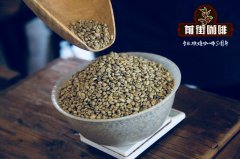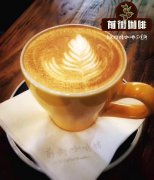Coffee pulp to make tea, is it called Cascara? What kind of tea is it? What's the effect?
Is coffee, fruit and tea called Cascara? What kind of tea is it? What's the effect?

The name of today's popular mocha coffee has nothing to do with chocolate. Mocha is actually the name of a port city in Yemen. What exactly is the string of mocha? Written in English: Mocca,Mocha,Moka, the correct Arabic spelling should be Al-Mahka.
Yemen is located at the end of the Arabian Peninsula, just across the sea from the African continent. In terms of coffee culture, Arabs prevailed earlier than in Europe. Mocha in Yemen was the largest coffee export port in the early days. All coffee exported from this, regardless of origin or flavor, is commonly known as mocha coffee. According to the The World of Caffeine book, Yemen is most likely the birthplace of coffee! Although wild coffee trees can be found all over the continent, coffee can not be found in ancient Greek and Roman literature. And there is no way to examine the legend of the shepherd. Every cup of coffee is buried with a mysterious historical background.
The coffee culture in Yemen is also very different from that in other places. As we all know, coffee beans are the seeds of coffee fruits. Yemenis like to drink a drink called Qishr, which is dried in the skin of red coffee, which still sticks to the flesh, and boiled with ginger, cinnamon and sugar. It is light pink and tastes like red jujube water. This drink is a local civilian drink and is cheaper than coffee.
Drought is the most precious thing. Coffee peel was shipped to the UK, packaged into coffee fruit tea, renamed Cascara, the price immediately doubled, the price of 6.5GBP / 200g. And then order it online to Hong Kong, with a freight fee of more than HK $200 per packet.
Cascara Tea
This is a refreshing soup made from the peel of coffee berries.
With the increasing demand for brewed coffee, the professional coffee and tea industry has undergone many changes in the past few years, and now these developments have become a novel and exotic beverage.
These exotic feelings have evolved into an industry, and there are countless people with "emotional and emotional labels" buried in this pit, why I can see clearly that words always inadvertently let you see the shadow at some point.
No nonsense, [CascaraTea], also known as coffee cherry tea. Even though the drink is slowly appearing in cafes around the world, it's still hard to find it if you want to give it a try, so what kind of strange things are these hard-to-find "teas"? look at the decomposition:
1. The form and source of CascaraTea
The first is [Cascara], which means "shell" or "skin" in Spanish. It is actually the exocarp of a coffee cherry, but it is just a sun-dried exocarp.
These subcutaneous seeds (that is, coffee beans) have been removed from the coffee berries, in other words, the exocarp that is peeled off after processing the raw beans. After drying in the sun, it can be packaged and transported and sold.
Miraculously, coffee is not only used in a creative way, but also environmentally friendly. Pulp skins are often considered an accessory to the coffee-making process, a waste, or discarded in botanical gardens or coffee plantations as compost. Now these pulp peels are reused by people to produce their own unique drinks.
These dried coffee cherry skins are not as thin as tea, bigger than tea, far look like some leather texture, have a hard shell similar to woody nuts, coffee? Or tea? I can't tell the difference.
Cascara has always been produced in Yemen and Ethiopia, and coffee growers in South America (especially El Salvador and Bolivia) have also begun to sell and export Cascara.
CascaraTea's fruit flavors are bright, even with hibiscus, citrus and tobacco flavors. The drinking of coffee can actually prove that Cascara has many possibilities, from flavored iced tea, spiced qishr (a ginger drink in Yemen), effervescent and soda, CascaraTea is rich and creative.
two。 Lower caffeine content
Although it comes from a coffee factory, it tastes different from drinking coffee.
Cascara is often described as sweet, with aromas of rose, hibiscus, cherry, mango and even tobacco. Similarly, tea also has caffeine. Someone sent Cascara to a laboratory in Germany to test how much caffeine is in tea made from coffee pulp peel.
Later reports said: "surprisingly, we found that its caffeine content is quite low. Even with the strongest measurement and the longest extraction time, the caffeine content in the peel of coffee pulp is 111.4 mg / L. this is nothing compared to coffee made from about 400,800mg of beans per liter."
3. Neither coffee nor traditional tea
Cascara is neither coffee nor tea, because Cascara does not belong to the species of tea plants, it cannot be classified as a real tea, nor is it herbal tea as some people think, but coffee is actually a kind of fruit, and coffee beans are the seeds of this fruit, so Cascara is fruit peel, not grass. A word pops up in the editor's mind.
Coffee berry tea may be a new drink in the United States, but before that, it has been in other parts of the world for some time, according to Melbourne Coffee, a coffee supplier to Buena Vista:
"the farmers who grow coffee in Yemen and Ethiopia dry the peel and drink it. The fact may be that when coffee was first discovered, it was first used to drink the peel, not coffee beans, where dried cherries are often soaked with spices. For example, hashara drinks made of ginger, nutmeg and cinnamon are called qisher in Ethiopia or Yemen."
Today these drinks are still popular in these countries because these raw materials come from a wide range of sources and are cheap.
4. Various production methods
Because coffee cherry tea is a relatively new way to drink compared to other places, there is no exact formula for a perfect cup of CascaraTea.
However, the general criteria of the proportion of water and tea and soaking time are obtained from the experiment:
? It is recommended that you use 5 to 7 grams of Cascara per serving, boil each serving with 8 ounces of water, or add a little honey or sugar to taste. CascaraTea is already quite sweet.
? Another way is to add ginger, nutmeg, cinnamon to make drinks, that is, qisher.
? Finally, it has to be mentioned that it is also feasible to use 6 tablespoons of Cascara and 10 ounces of cold water for 24 hours in the refrigerator.
5. Don't use laxatives as a drink.
But when you buy coffee and cherry tea CascaraTea, you should avoid being confused with Bosch CascaraTea. These are two completely different things. American CascaraTea is the bark of California seabuckthorn trees. It is often used as a laxative and is marked with Cascara, so be sure to identify the source of CascaraTea processing.
6.CascaraTea brings more fun
Although CascaraTea is still rare, it can be found in coffee bakeries across the United States, Europe and Australia, where many coffee shopkeepers withdraw it as a new product to people who don't like coffee or tea.
Important Notice :
前街咖啡 FrontStreet Coffee has moved to new addredd:
FrontStreet Coffee Address: 315,Donghua East Road,GuangZhou
Tel:020 38364473
- Prev

The hometown of Yemeni Mocha Coffee-- Yemeni Mocha Coffee History
The hometown of Yemeni mocha coffee-Yemeni mocha coffee history when it comes to Yemeni coffee, it is necessary to mention "mocha". Everyone has heard of "mocha coffee". What exactly is "mocha"? There are many answers to this question. Some people say that mocha is a certain place of origin, and some people remember that mocha is sweet chocolate coffee. In fact, authentic mocha coffee is only produced in
- Next

What does mocha pot have to do with Yemeni mocha coffee? What is Mocha Coffee?
What does mocha pot have to do with Yemeni mocha coffee? When it comes to mocha, your first reaction is: coffee with chocolate and cream? Mocha pot? Let's learn about Mocha's multiple identities ~ Port From the 15th century to the 17th century, it was a port town on the Red Sea in Yemen. It was the largest coffee trading place in the world. Not just Yemeni.
Related
- Detailed explanation of Jadeite planting Land in Panamanian Jadeite Manor introduction to the grading system of Jadeite competitive bidding, Red bid, Green bid and Rose Summer
- Story of Coffee planting in Brenka region of Costa Rica Stonehenge Manor anaerobic heavy honey treatment of flavor mouth
- What's on the barrel of Blue Mountain Coffee beans?
- Can American coffee also pull flowers? How to use hot American style to pull out a good-looking pattern?
- Can you make a cold extract with coffee beans? What is the right proportion for cold-extracted coffee formula?
- Indonesian PWN Gold Mandrine Coffee Origin Features Flavor How to Chong? Mandolin coffee is American.
- A brief introduction to the flavor characteristics of Brazilian yellow bourbon coffee beans
- What is the effect of different water quality on the flavor of cold-extracted coffee? What kind of water is best for brewing coffee?
- Why do you think of Rose Summer whenever you mention Panamanian coffee?
- Introduction to the characteristics of authentic blue mountain coffee bean producing areas? What is the CIB Coffee Authority in Jamaica?

